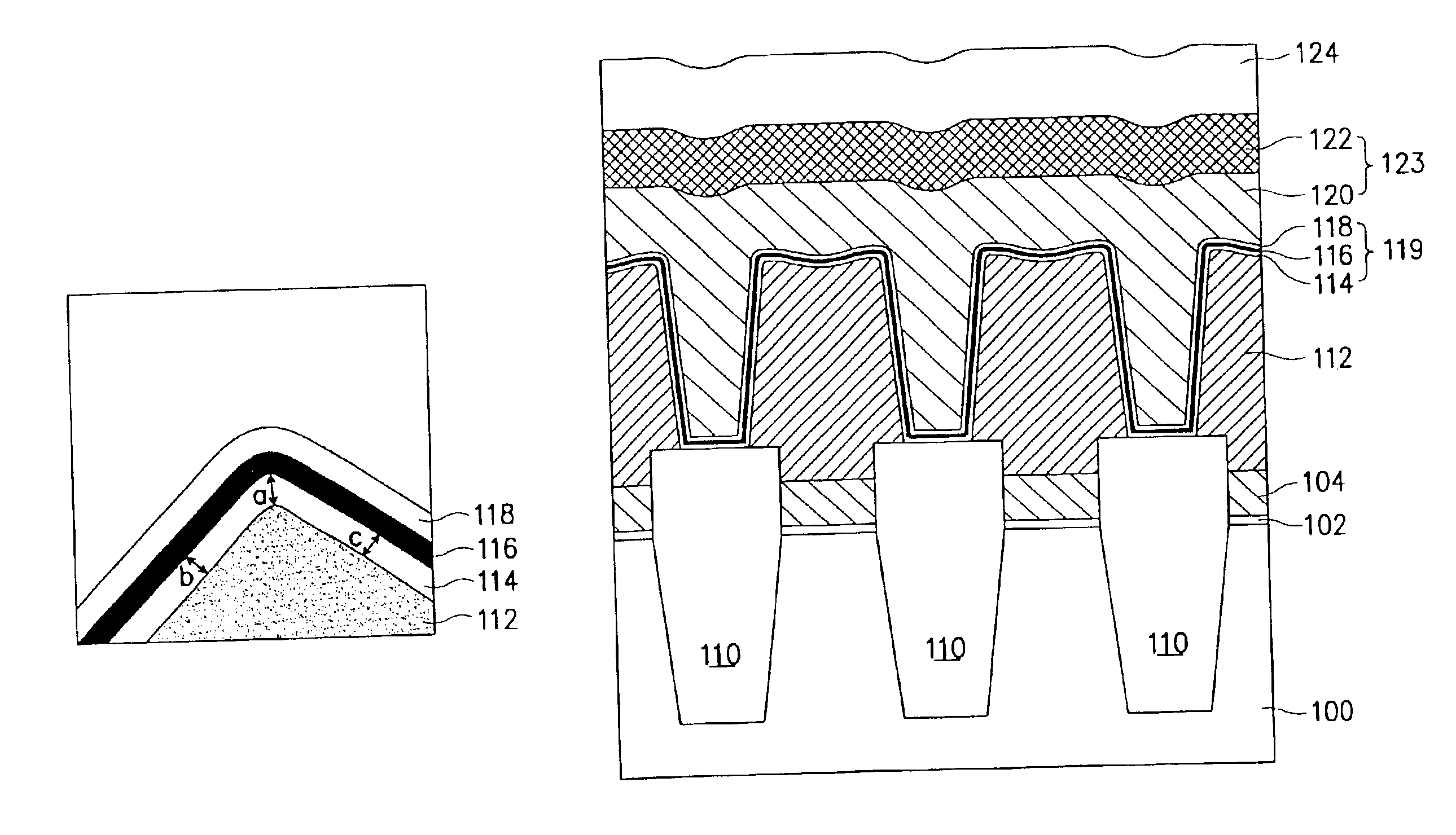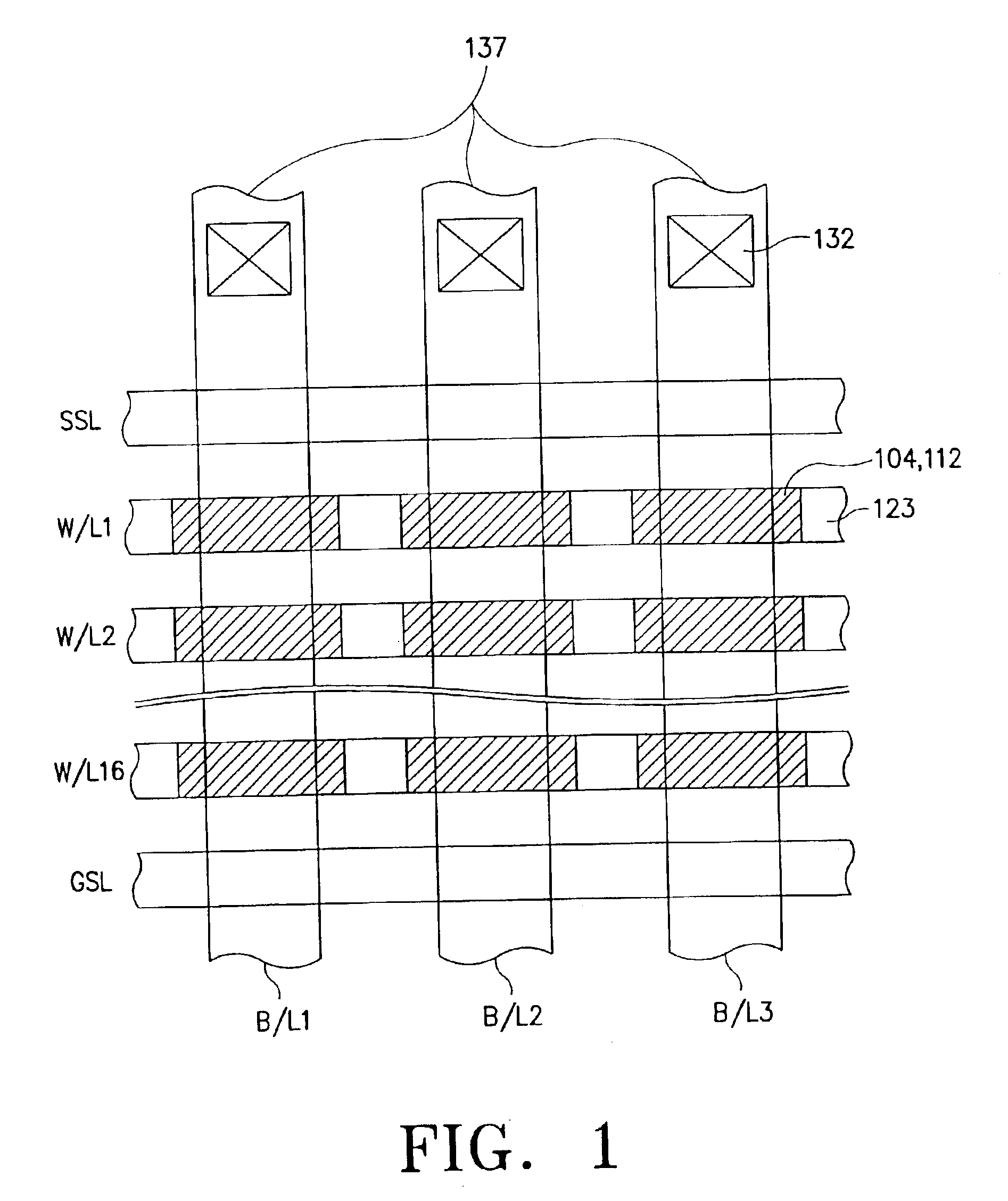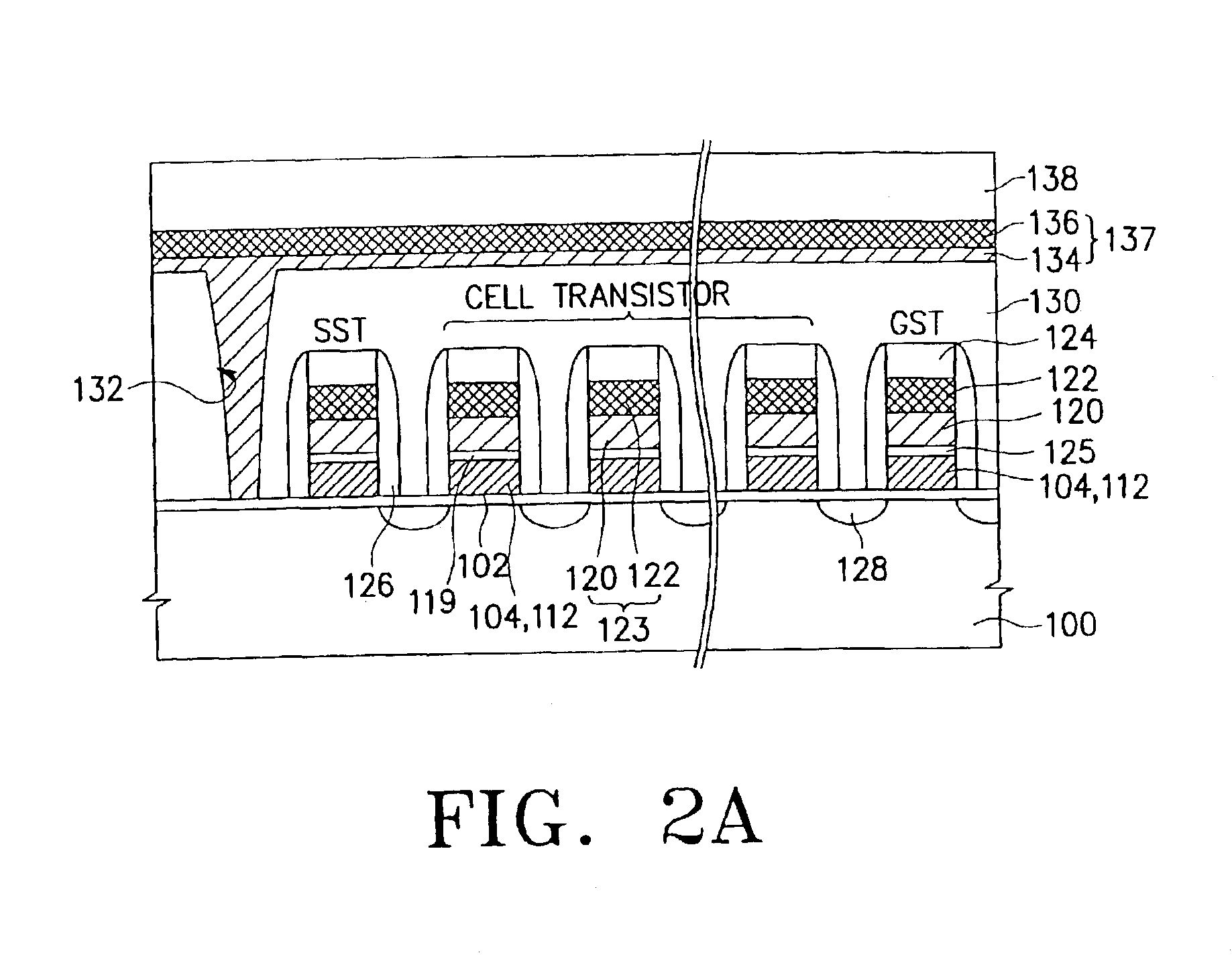Method of forming semiconductor device containing oxide/nitride/oxide dielectric layer
a dielectric layer and semiconductor technology, applied in the field of semiconductor devices, can solve the problems of difficult control of the thickness of the first oxide layer within a small value, difficult to form a thin thermal oxide layer over the floating gate composed of doped polysilicon, and difficult to form a thin thermal oxide layer over the floating gate, etc., to achieve high reliability, improve capacitance, and improve the effect of reliability
- Summary
- Abstract
- Description
- Claims
- Application Information
AI Technical Summary
Benefits of technology
Problems solved by technology
Method used
Image
Examples
examples
[0064]The following description reveals the results of experiments carried out in an effort to compare the charge retention property of the inventive LPCVD ONO dielectric interlayer 119 with those of the conventional ONO dielectric interlayer obtained by thermal oxidation. In these experiments, the target thickness of the ONO dielectric interlayer was determined to be 160 Å. The thickness of the conventional ONO dielectric layer was measured to be about 190 Å, and that of the inventive LPCVD ONO was about 160 Å, as determined by TEM (Transmission Electron Microscopy). The reason for the difference in thickness of the respective ONO dielectric layers was believed to be caused by the low oxide layer of the conventional ONO dielectric layer being grown to a thickness of about 40 Å over the bare wafer, while the upper oxide layer was grown to a thickness of about 84 Å over the floating gate polysilicon layer due to the oxidation enhancement caused by the dopants. In addition, the thickn...
PUM
 Login to View More
Login to View More Abstract
Description
Claims
Application Information
 Login to View More
Login to View More - R&D
- Intellectual Property
- Life Sciences
- Materials
- Tech Scout
- Unparalleled Data Quality
- Higher Quality Content
- 60% Fewer Hallucinations
Browse by: Latest US Patents, China's latest patents, Technical Efficacy Thesaurus, Application Domain, Technology Topic, Popular Technical Reports.
© 2025 PatSnap. All rights reserved.Legal|Privacy policy|Modern Slavery Act Transparency Statement|Sitemap|About US| Contact US: help@patsnap.com



